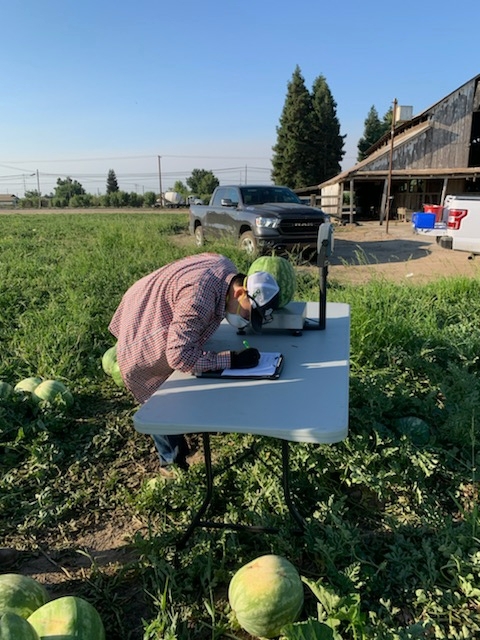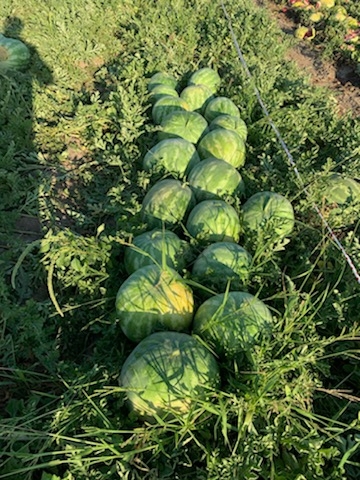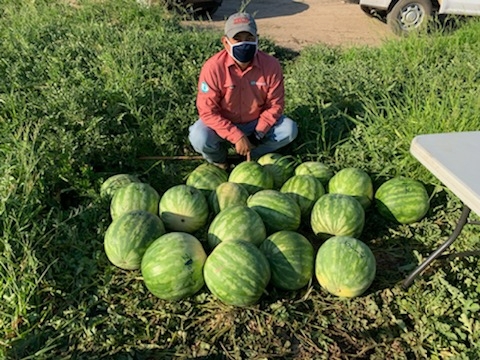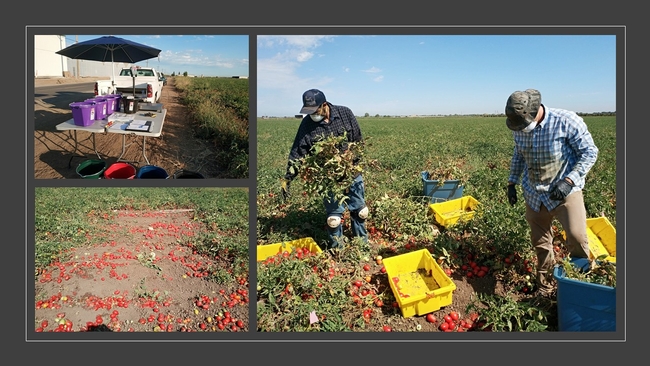- Author: Zheng Wang
Crop biostimulant is abundant and complex in its function, causing plethora of questions on selecting, using, and evaluating its on-farm efficacy. The first and maybe the foremost step toward a more effective use of crop biostimulants among vegetable growers is to understand their current use, experience, concerns and hopes. To accomplish the task, a survey was sent out to collect the specific information from vegetable growers mainly in the San Joaquin Valley and other counties in California. I recently published the results of the survey at Progressive Crop Consultant. You can read the article following the link: https://progressivecrop.com/magazine-archive/march-april-2021/. Excerpts of figures from the article are shared here. The results was also reported in the recent Biostimulant World Congress at https://informaconnect.com/biostimulants-world-congress/speakers/zheng-wang/#science-track-session-5-the-future-of-biostimulants_voice-from-california-vegetable-growers-on-crop-biostimulants-impression-concern-and-hopes

Growers' concerns regarding the use of crop biostimulants on vegetable crops

Number of responses to the agreement on the importance of future measures in improving the use of biostimulants.
- Author: Zheng Wang
Hello Everyone,
Rachael Long (Farm Advisor in Yolo County) and myself will collaborate with UC IPM to host a series of four 1-hour educational webinars regarding the use of biostimulants and plant growth regulators in crop production, with a focus on vegetable and field crops. Both types of biologics are increasingly used in regulating crop growth and development but also bring discussions regarding their definition, regulation, and efficacy in field situations. The webinars are designed for the agricultural community including growers, researchers, crop consultants, pest control advisors, and others in the industry.
Please check the attached flyer for details. To register, follow the link (https://ucanr.edu/sites/ucexpertstalk/) and click on each webinar topic for the registration page. Please contact me with any questions. We look forward to “seeing” you.
Program flyer
- Author: Zheng Wang
This is a challenging year. Due to the COVID-19, we only implemented one biostimulant trial. We collaborated with BioWorks, Inc. to evaluate the use of a biofungicide (Root Shield Plus) and biofertilizer (On-Gard) alone or in combination to impact watermelon growth and yield production. Three application treatments plus a nontreated control was arranged in a commercial watermelon field in Turlock. All application followed manufacturer recommended rates at the following timings as a foliar spray. Each treatment row is 40 feet long containing 7 seedless plants and 2 pollenizers. Watermelon plants were placed in single rows of 80-inch wide beds with 6 feet apart.
| Treatments | Timings |
| RootShield Plus and On-Gard (RSP and OG) |
Rootshield: 2 and 6 weeks after transplanting; On-Gard: 2 weeks after transplanting and then every other week until before the first harvest |
| RootShield alone (RSP) | 2 and 6 weeks after transplanting |
| On-Gard alone (OG) | 2 weeks after transplanting and then every other week until before the first harvest |
| Non-treated control | Same volume of water was applied at each product application. |
Two harvests were conducted on July 15 and 29, 2020. Fruit were weighed, counted, and fruit from the first harvest were brought to the lab for quality analysis, including Brix, rind thickness, fruit length and width, and hollow heart rating. Also, leaf chlorophyll concentration and NDVI were measured throughout the season. The data are included in the following tables except for NDVI readings.
Fruit yield from the first and second harvest on July 15 and 29, 2020.
|
Treatment |
Total number per plot |
Total weight (lbs. per plot) |
Avg. fruit wt. (lbs.) |
|||
|
|
1st harvest |
2nd harvest |
1st harvest |
2nd harvest |
1st harvest |
2nd harvest |
|
RSP and OG |
17 |
9 |
336 |
183 |
20.2 |
21.3 |
|
RSP |
16 |
9 |
300 |
186 |
18.8 |
20.9 |
|
OG |
16 |
13 |
338 |
292 |
20.7 |
22.9 |
|
Non-treated control |
11 |
6 |
228 |
135 |
20.1 |
22.2 |
|
P value |
0.38 |
0.04 |
0.30 |
0.05 |
0.02 |
0.63 |
|
LSD0.05 |
7 |
5 |
145 |
111 |
1.5 |
3.1 |
Fruit quality measured using the fruit from the first harvest.
|
Treatment |
Brix |
Rind thickness (mm) |
Width (in.) |
Length (in.) |
Hollow heart |
Chlorophyll conc. (umol/m2) |
|
RSP and OG |
12.3 |
14.6 |
10.6 |
11.4 |
2.0 |
593 |
|
RSP |
12.2 |
16.3 |
10.6 |
11.3 |
2.2 |
637 |
|
OG |
12.2 |
15.2 |
10.8 |
11.3 |
2.0 |
632 |
|
Non-treated control |
12.0 |
12.7 |
10.7 |
11.5 |
1.2 |
659 |
|
P value |
0.82 |
0.01 |
0.55 |
0.86 |
0.17 |
0.43 |
|
LSD0.05 |
0.60 |
1.70 |
0.41 |
0.63 |
1.01 |
93 |
Yield from the combination of the two harvests.
|
Treatment |
Total number per plot |
Total weight (lbs. per plot) |
Avg. fruit wt. (lbs.) |
|
RSP and OG |
25 |
519 |
20.4 |
|
RSP |
25 |
485 |
29.5 |
|
OG |
29 |
631 |
21.7 |
|
Non-treated control |
17 |
362 |
20.8 |
|
P value |
0.05 |
0.02 |
0.08 |
|
LSD0.05 |
7 |
135 |
1.6 |



- Author: Zheng Wang
The biostimulant trials were conducted during the summer of 2019 with the collaborations of two companies. Study results have been reported to the California tomato growers and industry. Please check the attached file for the access to the results.
biostimulant summer trials 2019
- Author: Zheng Wang
Recently, two evaluation trials of crop biostimulants in Patterson were harvested. These two trials involved a Calcium-based and fungi-containing products, aiming to maintain yield and plant health, and protect crop quality. Ten and eight plants were hand harvested from the respective trial. Fruit were then sorted by their quality, placed in designated buckets, and weighed separately. Plant aboveground biomass was measured after fruit were picked. Red/marketable fruit were subsampled, brought to quality station in Modesto, and measured for pH, Brix, Color reading, and titratable acidity. All results are being analyzed, and final reports will be synthesized soon.




